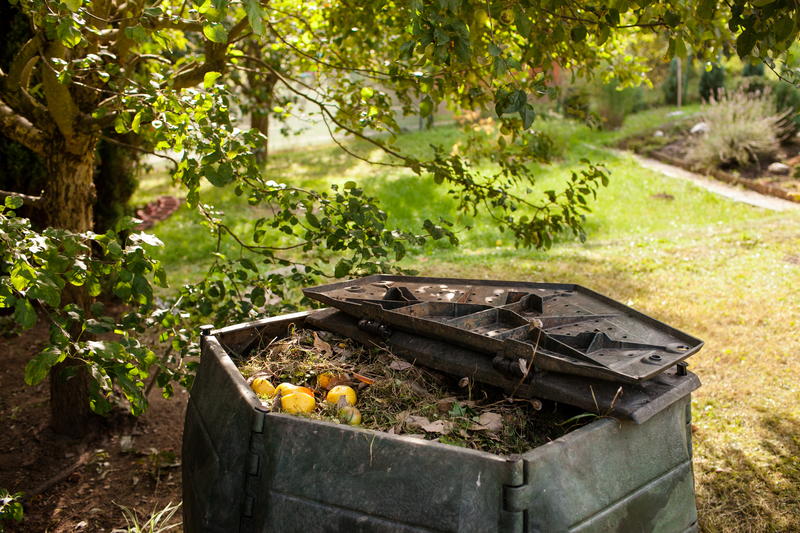Understanding the Importance of Proper PPE Waste Disposal in Communities
The rise in the use of Personal Protective Equipment (PPE) has become a crucial public health measure, especially during outbreaks, pandemics, and in various industrial settings. However, the increased reliance on PPE has also given rise to a significant environmental and public health concern: improper PPE waste disposal. Ensuring correct and responsible disposal of used PPE is vital for the safety of communities and the protection of our environment.
This comprehensive guide provides actionable community guidelines for proper PPE waste disposal, aiming to educate, inform, and inspire communities to implement safer and greener waste management practices.

What Is PPE Waste and Why Does It Matter?
Personal Protective Equipment refers to items designed to shield individuals from hazards, including masks, gloves, face shields, gowns, and shoe covers. As these items are often single-use and can become contaminated, they present unique challenges for waste management.
- Hazardous Nature: Used PPE can carry viruses, harmful bacteria, or toxic chemicals, posing a direct threat to sanitation workers and the wider community if not disposed of properly.
- Environmental Impact: Most PPE is made from non-biodegradable materials like plastics, which, when littered, contribute to land and water pollution, harming wildlife and ecosystems.
- Visual Pollution: Improperly discarded best PPE waste clutter public spaces, parks, and streets, creating an eyesore and reducing the quality of communal environments.
Common Types of PPE Waste
Before we delve into the proper PPE waste disposal guidelines, it's essential to understand the forms PPE waste commonly takes:
- Masks: Including surgical, cloth, KN95, and N95 masks.
- Gloves: Made of latex, vinyl, or nitrile.
- Face Shields and Goggles: Typically plastic-based and often reusable but sometimes discarded incorrectly.
- Gowns and Aprons: Disposable protective garments used in healthcare and industry.
- Shoe Covers and Caps: Single-use items found mostly in medical and high-risk industrial settings.
Why Communities Need Clear PPE Waste Disposal Guidelines
Community engagement is pivotal in the effort to manage PPE waste effectively. Proper PPE waste disposal protects not only individual health but also supports municipal waste management and environmental preservation. Without community-wide cooperation, efforts to curb the spread of diseases and minimize pollution may be undermined.
Benefits of Clear Community Guidelines
- Reduces disease transmission risk by limiting direct contact with contaminated materials.
- Prevents environmental degradation through responsible disposal and recycling protocols.
- Improves sanitation worker safety by making waste segregation and handling safer.
- Cultivates shared responsibility and promotes a culture of environmental stewardship.
Best Practices for Proper PPE Waste Disposal
To build healthier communities, following proper PPE waste disposal methods is necessary. The following best practices provide a practical foundation for individuals, households, institutions, and neighborhoods.
1. Segregate PPE Waste at the Source
- Always separate used PPE from regular household or office waste.
- Dedicate marked bins--preferably with lids--for PPE collection.
- Differentiate between infectious and non-infectious PPE waste, especially in healthcare settings.
2. Use Proper Disposal Bags and Bins
- Dispose of all PPE waste in sturdy, leak-proof bags.
- Use color-coded bags (commonly yellow or red for biohazardous material) for easy identification.
- Securely tie bags before disposal to prevent accidental spillage.
3. Label and Store PPE Waste Safely
- Clearly label waste containers as "PPE Waste" or "Biohazard Waste."
- Store filled bags in a secure, designated area away from pets, children, or the public.
- If possible, add a date to monitor collection schedules.
4. Follow Local and National Disposal Regulations
- Check official municipal or government guidelines for PPE waste management procedures.
- Adhere to special collection days or locations designated for medical waste disposal.
- Never dispose of PPE waste in public bins or open spaces.
5. Disinfection Prior to Disposal (When Feasible)
- Lightly spray used PPE with disinfectant (avoid excess liquid that could leak).
- Allow PPE to sit in a sealed bag for 72 hours before general disposal, if advised locally.
6. Protect Sanitation Workers
- Ensure all PPE waste bags are intact and not overfilled.
- Add a visible warning or biohazard label where risk is high.
- Advocate for PPE provision and safety training for waste handlers.
7. Consider Environmentally-Safe Options
- Whenever possible, choose reusable or biodegradable PPE.
- Participate in specialized recycling programs for PPE (growing in availability in many communities).
- Raise awareness about the dangers of burning PPE waste, which can release toxic fumes.
Special Community Initiatives for PPE Waste Disposal
Communities around the globe are introducing innovative approaches to tackle PPE litter and waste. Here are some effective PPE disposal initiatives any community can adopt:
- Community PPE Drop-Off Points: Establish supervised collection stations at local malls, hospitals, or municipal buildings to ensure safe and centralized PPE waste collection.
- Neighborhood Clean-Up Drives: Regular community clean-up events encourage responsible behavior and reduce stray PPE waste in public areas.
- Awareness Campaigns: Launch educational programs (online and offline) to inform residents about the importance and methods of proper PPE disposal.
- School Programs: Teach children about the significance of PPE waste segregation and its environmental consequences, cultivating lifelong responsible habits.
- Support Recycling Solutions: Partner with recycling firms developing technologies to process and repurpose PPE material safely.
PPE Waste Disposal: Dos and Don'ts
Dos
- Dispose of used masks and gloves in designated PPE bins only.
- Wash hands thoroughly after handling or discarding PPE.
- Inform sanitation departments if many people in your area are self-isolating with illness.
- Stay updated on official guidance for PPE disposal in your locality.
Don'ts
- _Never_ throw PPE into recycling bins not meant for such waste.
- Don't litter masks, gloves, or shields on the streets or parks.
- Never flush PPE items down toilets or drains, as they can cause severe blockages and pollution.
- Avoid burning PPE waste in open spaces.
- Don't mix contaminated PPE waste with general household or food waste.
How to Encourage Community Compliance with PPE Waste Disposal Guidelines
Ensuring adherence to community PPE waste disposal guidelines requires ongoing effort and engagement from all residents. Here are effective strategies to promote compliance:
- Clear Signage: Place simple, visible signs on bins and drop-off points to guide correct disposal.
- Regular Communication: Use social media, newsletters, and town halls to update the community on best practices and evolving regulations.
- Leadership by Example: Community leaders, businesses, and schools should actively demonstrate and encourage proper disposal.
- Monitor and Evaluate: Track the volume of PPE waste and gather feedback to refine strategies and address challenges.
- Accessible Resources: Provide enough disposal points, free PPE bags, and easy-to-understand educational materials.
Addressing Common Myths about PPE Waste Disposal
Misinformation and myths about PPE waste disposal can hinder effective community action. Let's dispel some common misconceptions:
-
Myth: "PPE is safe once used, so it can go in the regular trash."
Fact: Used PPE may still carry infectious agents, and must be treated as a potential hazard. -
Myth: "All PPE is recyclable."
Fact: Most PPE, especially mixed-material items, is not recyclable in standard programs unless processed by specialist facilities. -
Myth: "It's only the responsibility of hospitals and clinics to manage PPE waste."
Fact: Everyone who uses PPE--at home, work, or in public--is responsible for correct disposal. -
Myth: "Composting is suitable for all masks and gloves."
Fact: Most PPE is made of synthetic, non-compostable materials and will not degrade safely in compost.

The Global Perspective: Why Responsible PPE Waste Disposal Matters Everywhere
The COVID-19 pandemic and subsequent health emergencies have highlighted how interconnected our world truly is. The improper disposal of PPE has led to a surge of litter on beaches, in waterways, and across urban spaces globally. Consider these sobering statistics:
- According to some estimates, more than 129 billion face masks are used monthly worldwide.
- Hundreds of millions of single-use gloves are discarded daily.
- Improperly managed PPE waste can linger in the environment for centuries, harming both marine and land life.
By adopting and sharing community guidelines for proper PPE waste disposal, communities can contribute significantly to a cleaner, safer planet--and inspire neighboring regions to do the same.
Conclusion: Building a Culture of Responsible PPE Waste Disposal
The challenge of PPE waste is one that demands community spirit, awareness, and action. By understanding the risks, embracing best practices, and empowering every resident to play their part, we can create healthier neighborhoods and a more sustainable world. Share this guide to support your local initiatives, and always practice proper PPE waste disposal--for your health, your community, and the environment.
Key Takeaways
- Proper segregation, secure storage, and adherence to local guidelines are essential for safe PPE disposal.
- Communities thrive when residents, businesses, and officials collaborate on waste solutions.
- Your choices matter--always dispose of PPE responsibly and encourage others to do the same.
For more resources and updates on safe waste management, consult your local municipal website or national health authorities.
